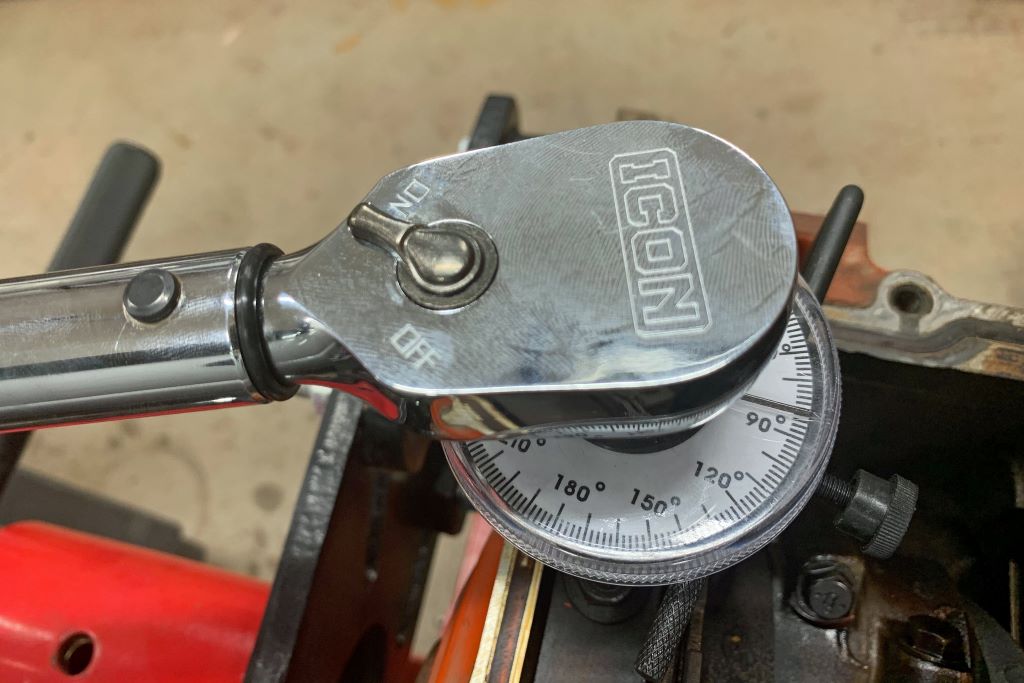Industrial professionals and mechanical engineers worldwide rely on precise fastening techniques to ensure reliable equipment performance. The Engineers Network community has consistently emphasized the importance of proper bolt tightening methods in manufacturing and maintenance applications. Understanding advanced fastening strategies can significantly improve assembly quality and reduce equipment failures.
Modern manufacturing demands increasingly sophisticated approaches to fastening technology. Traditional torque-only methods often fall short when dealing with complex assemblies and high-performance applications. This is where torque-to-angle tightening becomes essential for successful machine assembly operations. Engineers now recognize that combining torque and angle measurements provides superior control over bolt preload and joint integrity.
The evolution of fastening technology has transformed how we approach critical connections in industrial equipment. Subsequently, torque-to-angle methods have emerged as the gold standard for many applications requiring precise and repeatable fastening results.
Understanding Torque-to-Angle Fundamentals
Torque-to-angle tightening represents a two-stage fastening process that overcomes the limitations of traditional torque-only methods. Initially, the fastener receives a specific torque value to seat properly and eliminate slack. Then, the bolt undergoes additional rotation through a predetermined angle to achieve the desired preload.
This dual approach addresses several critical issues in machine assembly applications. Friction variations between fasteners can cause significant differences in final preload when using torque alone. Additionally, surface conditions, thread quality, and lubrication levels all influence the relationship between applied torque and resulting bolt tension.
The angle portion of the tightening process operates in the elastic range of the bolt material. Consequently, the additional rotation creates predictable and consistent preload regardless of friction variations. This reliability makes torque-to-angle methods particularly valuable for critical applications where joint integrity cannot be compromised.
Key Advantages in Machine Assembly Applications
Torque-to-angle tightening offers numerous benefits over conventional methods in machine assembly scenarios. First, this approach provides superior preload consistency across multiple fasteners in the same joint. Traditional torque-only methods can produce preload variations of 25-30%, while torque-to-angle typically achieves variations within 10-15%.
Furthermore, the method accommodates different fastener materials and coatings more effectively. Stainless steel fasteners, zinc-plated bolts, and specialty coated hardware all respond differently to applied torque. However, the angle portion normalizes these differences by working within each material’s elastic characteristics.
Machine assembly operations also benefit from reduced risk of over-tightening and fastener failure. The controlled angle rotation prevents excessive stress concentration that can lead to bolt breakage or thread stripping. Moreover, this approach extends fastener life and reduces maintenance requirements over the equipment’s operational lifetime.
Implementation Strategies and Best Practices
Successful torque-to-angle implementation requires careful planning and proper equipment selection. Digital torque wrenches with angle measurement capabilities are essential for accurate execution. These tools must provide precise torque control during the initial stage and accurate angle measurement during the rotation phase.
Establishing proper tightening parameters begins with understanding the fastener specifications and joint requirements. Engineers must determine the appropriate initial torque value, typically ranging from 30-50% of the fastener’s yield torque. Subsequently, the angle increment usually falls between 60-180 degrees, depending on the specific application and bolt characteristics.
Training personnel in proper technique is crucial for consistent results in machine assembly operations. Operators must understand the importance of smooth, steady rotation during the angle phase. Additionally, they need to recognize when abnormal resistance indicates potential problems with the fastener or joint components.
Equipment and Tool Requirements
Modern torque-to-angle applications demand specialized equipment capable of precise measurement and control. Electronic torque wrenches with integrated angle sensors represent the most common solution for production environments. These tools typically offer programmable parameters, data logging capabilities, and real-time feedback to operators.
For high-volume machine assembly operations, automated tightening systems provide enhanced consistency and productivity. These systems can store multiple tightening programs, monitor joint quality parameters, and generate detailed reports for quality control purposes. Furthermore, they eliminate operator variability and reduce the risk of human error in critical applications.
Calibration and maintenance of tightening equipment play vital roles in achieving reliable results. Regular calibration schedules ensure measurement accuracy, while proper maintenance prevents premature tool failure. Additionally, backup equipment should be available to maintain production schedules during calibration or repair periods.

Quality Control and Verification Methods
Implementing effective quality control measures ensures consistent torque-to-angle results in machine assembly applications. Process monitoring should include verification of both torque and angle values for each fastener. Statistical process control techniques help identify trends and variations that might indicate equipment problems or process drift.
Periodic joint audits using calibrated measuring equipment verify the effectiveness of the tightening process. Bolt tension measurements or joint deflection readings can confirm that fasteners achieved their intended preload. These verification methods provide confidence in the assembly quality and help identify potential issues before they cause equipment failures.
Documentation and traceability become increasingly important in critical applications. Recording tightening parameters, tool identification, operator information, and verification results creates an audit trail for quality investigations. Moreover, this data supports continuous improvement efforts and process optimization initiatives.
Common Applications and Industry Uses
Automotive manufacturing represents one of the largest applications for torque-to-angle tightening in machine assembly operations. Engine assembly, transmission construction, and chassis fabrication all utilize these methods for critical fasteners. The consistency and reliability of torque-to-angle methods help ensure vehicle safety and performance standards.
Heavy machinery manufacturing also relies extensively on these advanced tightening techniques. Construction equipment, mining machinery, and agricultural implements require robust fastening solutions to withstand harsh operating conditions. Torque-to-angle methods provide the reliability needed for these demanding applications.
Power generation equipment, including turbines, generators, and pumping systems, depends on precise fastening for safe operation. The high stresses and dynamic loads in these applications make traditional torque-only methods inadequate. Consequently, torque-to-angle tightening has become standard practice for critical components in the power industry.
Troubleshooting Common Issues
Several common problems can occur during torque-to-angle implementation in machine assembly operations. Excessive friction during the angle phase may indicate contaminated threads, improper lubrication, or damaged fastener components. Addressing these issues typically requires cleaning, re-lubrication, or fastener replacement.
Inconsistent angle measurements often result from worn or damaged measuring equipment. Regular calibration and maintenance help prevent these problems, but operators should be trained to recognize signs of equipment malfunction. Additionally, backup measurement methods can verify questionable readings when necessary.
Joint relaxation after tightening may indicate improper surface preparation, inadequate joint design, or unsuitable fastener selection. These issues require engineering analysis to identify root causes and implement corrective actions. Sometimes, design modifications or alternative fastening strategies may be necessary to achieve acceptable joint performance.
Future Developments and Technology Trends
Advancing technology continues to improve torque-to-angle capabilities in machine assembly applications. Smart fasteners with integrated sensors can provide real-time feedback on bolt tension and joint condition. These developments promise to revolutionize quality control and maintenance practices in critical applications.
Artificial intelligence and machine learning algorithms are beginning to optimize tightening parameters based on joint characteristics and performance data. These systems can adapt to variations in materials, environmental conditions, and assembly requirements to maximize joint reliability. Furthermore, predictive maintenance capabilities can identify potential failures before they occur.
Wireless connectivity and cloud-based data management systems enable remote monitoring and analysis of tightening operations. This technology supports centralized quality control, process optimization, and maintenance scheduling across multiple production facilities. Additionally, it facilitates compliance reporting and regulatory documentation requirements.
Conclusion
Torque-to-angle tightening methods represent a significant advancement in machine assembly technology, offering superior consistency and reliability compared to traditional approaches. The combination of initial torque application followed by precise angle rotation addresses the fundamental limitations of torque-only fastening methods. This dual approach provides predictable preload values regardless of friction variations, surface conditions, or fastener characteristics.
The benefits extend beyond improved fastening consistency to include reduced maintenance requirements, extended equipment life, and enhanced safety performance. Proper implementation requires appropriate equipment, thorough training, and robust quality control measures. However, the investment in these advanced methods pays dividends through improved product quality and reduced warranty costs.
Looking forward, emerging technologies will continue to enhance torque-to-angle capabilities and expand their applications in machine assembly operations. Smart fasteners, artificial intelligence optimization, and wireless connectivity promise to further improve reliability and efficiency in critical fastening applications.
Frequently Asked Questions
What is the main difference between torque-only and torque-to-angle tightening methods? Torque-only methods apply a specific rotational force to achieve fastener tension, while torque-to-angle methods combine initial torque application with additional rotation through a predetermined angle. This dual approach provides more consistent preload by working within the fastener’s elastic range, reducing the impact of friction variations.
How do you determine the correct angle for torque-to-angle tightening? The appropriate angle depends on fastener material, diameter, thread pitch, and joint requirements. Typically, angles range from 60-180 degrees beyond the initial torque value. Fastener manufacturers often provide specific recommendations, or engineering calculations can determine optimal parameters based on desired preload and bolt characteristics.
Can torque-to-angle methods be used with all types of fasteners? Most standard bolts and screws can accommodate torque-to-angle tightening, but the method works best with fasteners designed for this application. Special consideration is needed for hardened fasteners, unusual materials, or non-standard thread forms. Always consult fastener specifications and conduct testing before implementing in critical applications.
What equipment is required for accurate torque-to-angle tightening? Digital torque wrenches with integrated angle measurement capabilities are essential for manual applications. Automated systems may use servo-controlled tools with precise torque and angle monitoring. All equipment must be regularly calibrated to ensure accuracy, and operators need proper training in correct techniques.
How often should torque-to-angle equipment be calibrated? Calibration frequency depends on usage intensity and accuracy requirements, but most industrial applications require calibration every 3-6 months or after a specified number of cycles. High-precision applications may need more frequent calibration, while less critical uses might extend intervals. Always follow manufacturer recommendations and document calibration activities for quality control purposes.
Read More:





